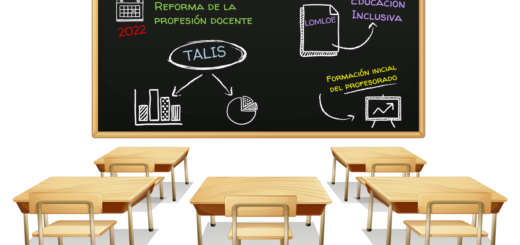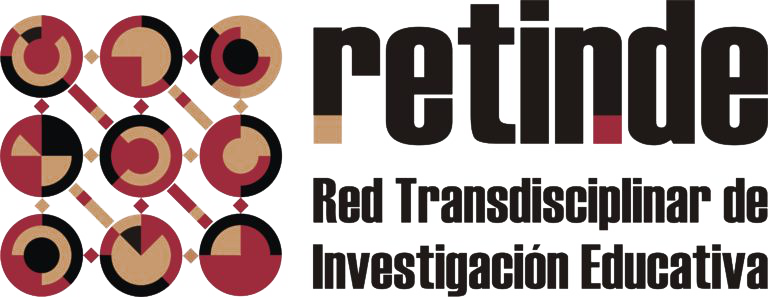Hyflex . Towards a hybrid and flexible instruction?
Hybrid instruction and learnig
Blending learning or hybrid instruction concepts refers to teaching modalities that mix face-to-face teaching situations with virtual or digitized teaching formats (Area-Moreira, 2022).However, different conceptions and instructive practices currently coexist on how to understand this mixture or combination between the face-to-face and the virtual. One of the best known and most widespread is the model called flipped classroom or flipped classroom. In this approach, theoretical knowledge is offered through digital objects that package said content (either in an audiovisual pill or video lesson, or in reading texts, or in infographics or podcasts). The mix consists of the student working on these contents online at home, and in the physical classroom developing practices or activities on said knowledge in person under the supervision of the teacher.
Another hybrid teaching model was implemented in many Spanish universities during the 2020-21 academic year conditioned by the pandemic situation. It consisted of installing cameras to broadcast online by streaming the face-to-face classes that were taught there to part of the students. Simultaneously, in real time, the other half of the students followed these lessons from home electronically. This model was called ” adapted attendance “.
A third type of hybrid or blended learning consists of combining face-to-face classes in a physical classroom with the support or complement of a virtual classroom or environment created specifically for the subject or course. The training process takes place both in physical settings through the face-to-face modality and through this asynchronous virtual environment. In this environment or virtual classroom, students find a set of tasks, materials and resources for autonomous work on the subject without the direct presence of the teacher.
Hyflex or hybrid and flexible teaching
Finally, a fourth model consists of offering students the flexibility to choose between different modalities or formats to take the subject, which can be hybrid, face-to-face and/or online.The concept of Hyflex comes from the Anglo-Saxon field as an acronym resulting from the fusion of the terms hybrid and flexible. One of the most prominent authors who has disseminated this concept is Beatty (2019) who points out that HyFlex has four basic principles or pillars: 1. Student choice : provide meaningful alternative modes of participation and allow students to choose between modes of participation daily, weekly or thematic. 2. Equivalence – provide learning activities in all modes of participation that lead to equivalent learning outcomes. 3. Reuse : use artifacts from learning activities in each mode of engagement as “learning objects” for all students. 4. Accessibility – Equipping students with technology skills and equal access to all modes of engagement.

Image by Iván Tamás at Pixabay
Mentzer et al. (2022) call this approach the synchronous interactive model. HyFlex , They define it “as an instructional model that provides an interactive, engaging and equitable classroom experience for students, regardless of whether they choose to join each class meeting in person or synchronously remotely”. In other words, the Hyflex in this conception supposes that the teaching is offered in a synchronous way, in real time, so that the student has the optionality or flexibility to choose the channel or modality of participation in the class: be it in the physical classroom. in person or through screens in an online modality.
An alternative vision that we are implementing at the University of La Laguna is to offer flexibility not only of the channel, but also didactic flexibility. It consists of the student being able to choose between different itineraries or training strategies. For example, follow a modality of individual learning and study of topics, or, a modality of learning in a small group and by completing projects or tasks. In this alternative Hyflex model, the combination consists of the intermingling of face -to-face in a physical space with the autonomous work of the students through a virtual classroom created specifically. That is, our Hyflex model is characterized by the following features:
- Implement a hybrid teaching modality that is the integrated combination of both face-to-face (synchronous) and virtual (asynchronous) learning situations, configuring a unified teaching-learning process.
- Offer flexible teaching-learning processes. This flexibility should offer students freedom of choice regarding:
- The channel or modality of participation (face-to-face vs. online).
- The didactic strategy or learning itinerary to be developed (learning by group projects vs. individual learning by topics or units).
- Design and make available to students a space or virtual classroom for autonomous and self-regulated learning so that they can develop the chosen itinerary.
- Establish flexible time frames for the delivery and evaluation of learning products or tasks.
A further development and description of this Hyflex model or approach can be seen in the work by Area, Bethecourt and Martin ( preprint ) where this case developed throughout the 2019, 2020 and 2021 academic years is described and analyzed, linking the effects of our Hyflex model with the academic performance of the students and with the subjective assessment that they make of the experience developed.
Bibliographic references
Area-Moreira, M. (2022). ¿Qué es la enseñanza híbrida?. Videolección del Servicio ULL audiovisual, Universidad de La Laguna. https://youtu.be/b6GKvRuED0o
Area Moreira, M., Bethencourt-Aguilar, A., & Martín-Gómez, S. (preprint). HyFlex: Enseñar y aprender de modo híbrido y flexible en la educación superior. RIED-Revista Iberoamericana De Educación a Distancia, 26(1). https://doi.org/10.5944/ried.26.1.34023
Beatty, B. J. (2019). Hybrid-Flexible Course Design. EdTech Books. https://edtechbooks.org/HyFlex
Mentzer, N., Krishna, B., Kotangale, A. et al. (2022). HyFlex environment: addressing students’ basic psychological needs. Learning Environ Research. https://doi.org/10.1007/s10984-022-09431-z

Image by Iván Tamás at Pixabay
Author:
Manuel Area-Moreira
EDULLAB Group. Laboratory of Education and New Technologies of the University of La Laguna (Spain)






